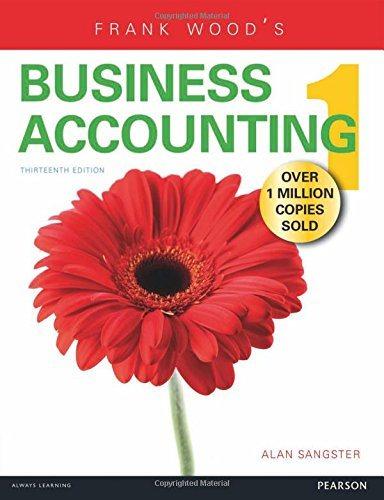Question
Ratio Analysis 9- This ratio measures how many times a company would be able to pay its interest using its earnings. A. Average Days to
Ratio Analysis
9- This ratio measures how many times a company would be able to pay its interest using its earnings.
A. Average Days to Sell Inventory Ratio B. Return on Assets C. Earnings Before Interest and Taxes
D. Times Interest Earned Ratio
After Tax Cost of Debt
7. On January 1, 2016 Brown Co. issued $200,000 of 10%, 20-year bonds. If Bluefield's tax rate is 40%, the after-tax cost of borrowing related to these bonds for 2016 is: A. $12,000. B. $8,000.
C. $20,000.
D. $28,000.
Effective Rate Interest METHOD on Premium or Discount
6. Weller Company issued bonds with a face value of $400,000, a 10% stated rate of interest, and a 10-year term. The bonds were issued on January 1, 2016, and Weller uses the effective interest method of amortization. The market rate of interest on the date of issue was 8%. Interest is paid annually on December 31.
Assuming Weller issued the bond for $431,940, the amount of interest expense appearing on the 2018 income statement would be: A. $33,649. B. $20,000.
C. $34,120.
D. $46,350.
Bonds at Face Value
4. Pace Company issued at 97 bonds with a face value of $200,000. As a result of the issue: A. Cash and Notes Payable would both increase by $200,000. B. Cash and Notes Payable would both increase by $206,000. C. Cash would increase by $194,000, Notes Payable would increase by $200,000, and Discount on Bonds Payable would increase by $6,000.
D. Cash would increase by $194,000, and Note Payable would increase by $200,000 and Discount on Bonds would increase by $0.
Step by Step Solution
There are 3 Steps involved in it
Step: 1

Get Instant Access to Expert-Tailored Solutions
See step-by-step solutions with expert insights and AI powered tools for academic success
Step: 2

Step: 3

Ace Your Homework with AI
Get the answers you need in no time with our AI-driven, step-by-step assistance
Get Started


